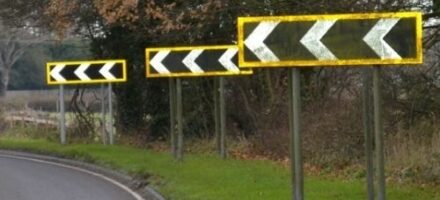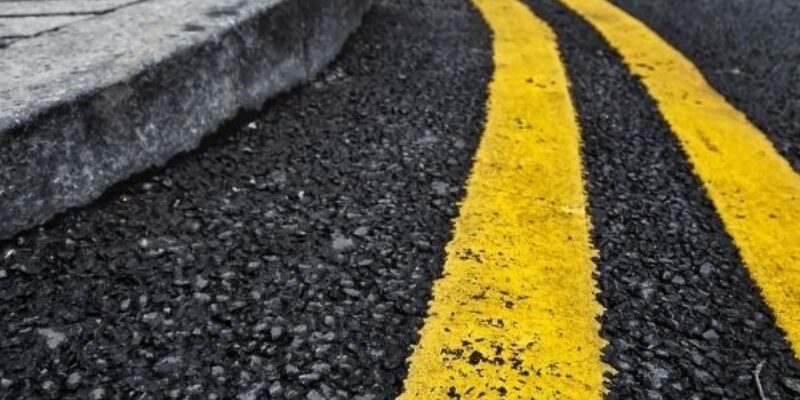

White Lines
White lines are usually on the road surface and tell you something about the road that you are travelling on. Lines that travel along the road (longitudinal) inform and warn drivers of approaching situations that will need them to do something - like turn right, or do not cross. Lines that cross the road (transverse) give instructions to road users like 'give way' or 'stop'.
A broken white line marks the middle of the road. When this line becomes longer, and the gaps get smaller, this means that there is a hazard close ahead. You should not cross this line unless you can see that the road ahead is clear and you wish to overtake another vehicle or turn off the road.
Double white lines where the line nearest to you is broken is an indication that you may cross the line to overtake, providing that it is safe and that you can complete the manoeuvre before it becomes a solid white line on your side. White arrows on the road will indicate when you need to get back on your side of the road.
Double white lines where the line nearest to you is solid means that you must not cross or straddle the line until it is safe and you need to enter adjoining premises or a side road. You may cross the line if you need to pass a car parked at the side of the road, overtake a push bike, horse or roadwork vehicle, if they are travelling at 10mph or below.
Areas with white diagonal stripes or chevrons are to keep traffic lanes apart or to protect any traffic that is turning right. If the area has a border of a broken white line, you shouldn't go into the area unless it is necessary and you can see clearly that it is safe for you carry out the manoeuvre.
N.B: If the area has diagonal stripes and is bordered with solid white lines you should not go into it. If the area is marked by chevrons, you must not enter it (unless in an emergency).
Short white broken lines are lane dividers and are used on wide carriageways to determine where the lanes are. They should not be crossed unless you are changing lanes and it is safe to do so.
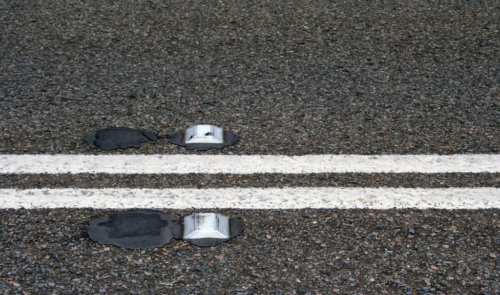
Reflective Studs with White Lines
- White studs mark the middle of the road or the lanes on a wider carriageway.
- Red studs mark the left hand edge of the road.
- Amber studs determine the central reservation of a motorway or a dual carriageway.
- Green studs mark the edge of the main carriageway when you are passing a lay-by, side road or slip road.
White lines that cross the end of the road you are travelling on all have different meanings and often depend on the road.
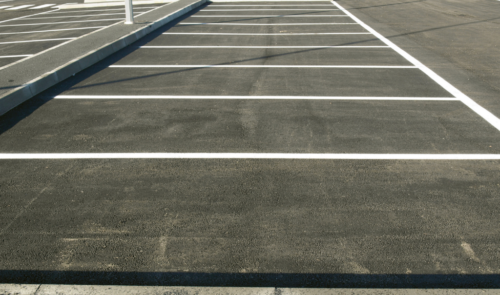
Parking
You should not to park on a single lane carriageway with a solid white line if it indicates a bus lane, pedestrian walkway or cycle lane.

Yellow Lines
There are various types of yellow lines marked on the road or on the edge of the pavement or kerb that indicate waiting restrictions. They are usually used when there is a need to restrict parking to help keep traffic flowing and consistent, and to prevent people being obstructed by other vehicles on public highways.
Double yellow lines tell us that there is no waiting at any time. However, there are usually exceptions and if there are, they will be indicated by plates attached to lamp posts nearby to tell motorists what the actual restrictions are. They can vary from council to council.
Single yellow lines tend to be less restrictive. Plates attached to lamp posts will tell you the exact restrictions and you may find that you are able to park there as long as you are not doing so at a restricted time.
Loading restrictions are also indicated by yellow markings on the kerbs and again by plates on the lamp posts.
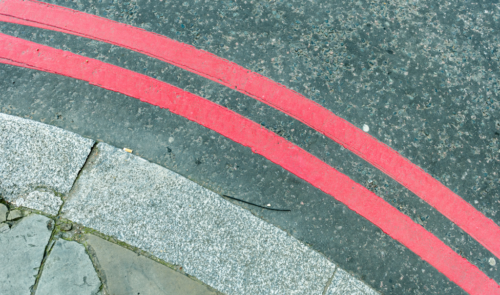
Red Lines
Seen less than the other colours, red lines ban all stopping, parking and loading. Double red lines apply at all times and single red lines apply usually during the working day. There are exceptions and they are indicated where they apply.

Jardine Motors Group will work hand-in-hand with you to help you stay up to date with the motoring world. Whether you are looking to switch to an electric vehicle, take care of your car maintenance or find a new or used car, our knowledgeable experts are able to provide you with the best help and advice.
Book a virtual appointment with one of our sales or aftersales experts or pay a visit to your nearest Jardine dealer.
You might also like
How to Give Learner Drivers Confidence
Visit our YouTube channel where you can find more car reviews and walkarounds by our fantastic experts.



